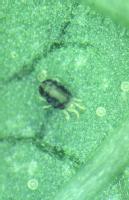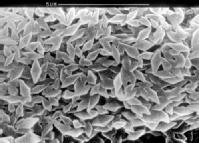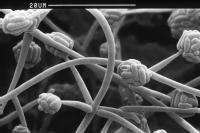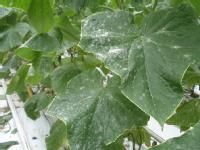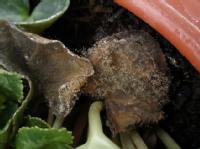What are biopesticides?
Biopesticides are crop protection agents based on living micro-organisms or natural products. Here we give examples of the main types:
Microbial biopesticides used against insect and mite pests
- The most widely used bacterial biopesticide against insect pests is Bacillus thuringiensis (Bt). This bacterium produces an insecticidal protein crystal that can be sprayed against pest targets.
- At least four different species of insect pathogenic fungi are commercially available as biopesticides: these pathogens have contact action, infecting insects and mites using spores that grow into the pest cuticle.
- Baculoviruses are a specialised type of virus that causes lethal diseases in caterpillars and some species of fly. Each baculovurus type has a very high degree of host specificity. As an example, the Cydia pomonella granulovirus (CpGV) is used as a commercial biopesticide against codling moth on apples. Microbial biopesticides for managing plant pathogens.
Microbial biopesticides used against plant pathogens
-
The bacterium Bacillus subtilis, which is used against Botrytis on strawberries and other crops, is currently the most widely used biopesticide in the UK.
-
There are a number of fungal antagonists of plant pathogens used as commercial biopesticides. Trichoderma is an antagonist of Rhizoctonia, Pythium, Fusarium and other soil borne pathogens. It has multiple modes of action. Other fungal anatagonists include Coniothyrium minitans, which is a mycoparasite applied against Sclerotinia sclerotiorum. Gliocladium catenulatum (= Clonostachys rosea) parasitizes hyphae of Botrytis cinerea, while Ampelomyces quisqualis is a parasite of a range of powdery mildew species.
Biopesticides based on natural products
- Plants, algae and other organisms produce a wide variety of natural metabolites that can inhibit crop pests and diseases. Worldwide, one of the most widely used ‘botanicals’ is neem oil, an insecticide extracted from seeds of the tree species Azadirachta indica. Essential oils from citrus and other plants are being used as biopesticides of both pests and diseases, while an extract from giant knotweed (Reynoutria sachalinensis) has been developed as a biofungicide for control of powdery mildew.
- Semiochemicals are chemical compounds produced by one organism and which induce a behavioural change in organisms of the same species or a different species. The most widely used semiochemicals are insect sex pheromones, which are deployed in pest monitoring, mating disruption and trapping. Mating disruption has proved to be very useful for managing pests of orchard crops including light brown apple moth, carnation tortrix moth and apple leaf rolling midge. An aggregation pheromone of thrips has also been found to be useful as a monitoring tool for economically important species such as western flower thrips; there is also good evidence that it can make mass trapping of thrips significantly more effective.
Microbial bioherbicides
- Recently, bioherbicides based on fungi such as Chondrostereum purpureum have been developed that can infect multiple weed species, and use of bioherbicides is set to increase in the future, particularly considering the serious problems that are occurring with herbicide resistance in some weed species such as blackgrass.

